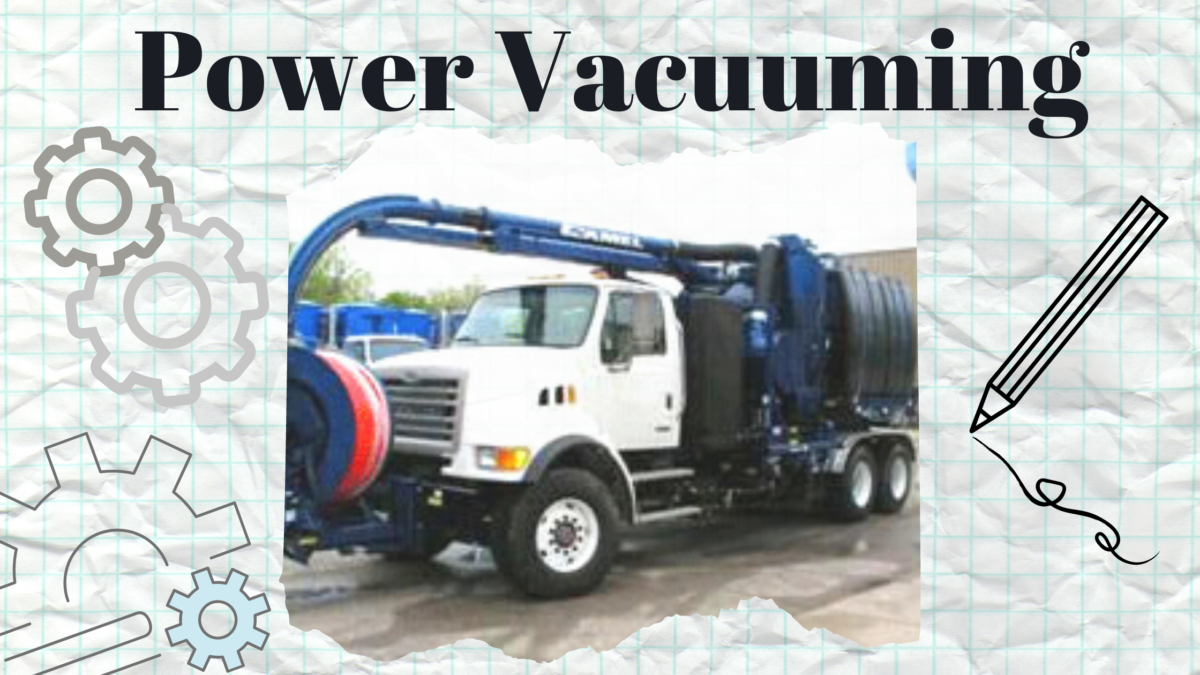What’s Power Vacuuming?
Power vacuuming is pretty much what the name suggests, it’s a way of vacuuming amounts and types of materials that your Shop-Vac cannot possibly handle. Extreme messes call for extreme solutions, and that’s exactly what power vacuuming is.
Power vacuums are actually trucks. They go by many different names. In America, you will most likely hear them referred to as either a vacuum truck, vacuum tanker, or a pumper truck. In Australia, they’re referred to as sucker trucks. In Canada, they might be referred to as a sewer sucker, hydro-vac, or a vac-truck. In Malawi, they’re called exhauster trucks. And if you find yourself in India or South Africa, you might hear them referred to as a honey truck, honey sucker, or honeywagon (sic). All of these nicknames are a testament to the importance of power vacuuming. It’s a necessity around the world.
Why Do We Need Power Vacuuming?
We need power vacuuming and vacuum trucks to clean up large amounts of material and to transport that material to a proper disposal site. Vacuum trucks clean up sludge, debris, liquids, and other similar waste from a variety of locations. These locations include catch basins, industrial tanks, and more. In a recent blog, we explored the importance of retention basins (also known as catch basins).
Overtime, a retention basin will become dirty and the polluted water will flow out into other areas causing harm. Litter such as bits of metal, bits of glass, and cigarette butts can easily end up in our water systems if left unchecked. Even seemingly harmless debris such as grass clipping, hedge trimmings, and leaves (known as green waste) can cause big issues.
Retention basins build up sentiment and can become clogged. This will result in flooding and possible harm to the integrity of the basin itself. If this happens, you may require power vacuuming.
Below are some photos of a catch basin we recently cleaned out for a client. Notice the amount of flooding caused by the clogged drain.
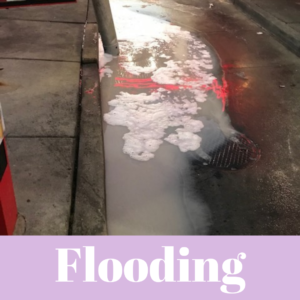

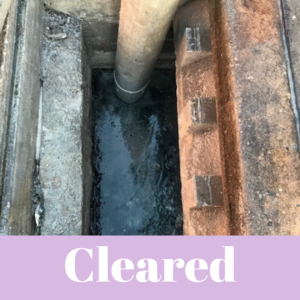
How Does Power Vacuuming Work?
For the most part, power vacuuming works just like your Shop-Vac only on a much larger scale. Because of the volume of waste involved, the machinery is much more complicated. Check out the diagram of a Shop-Vac below:
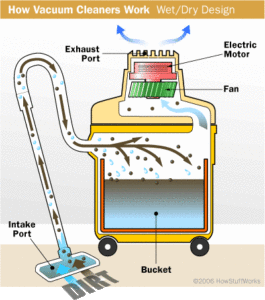
Courtesy of howstuffworks.com
Vacuum trucks incorporate two traps to ensure that waste material does not overflow and leak onto or into the sensitive electronic equipment. The image below shows the complexity of a typical vacuum truck. Compare it to the diagram of the Shop-Vac above and click here to read more about each part.
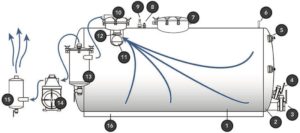
Courtesy of lmtmfg.com
If you’re really interested about the ins-and-outs of how these fascinating machines work, check out the video below:


